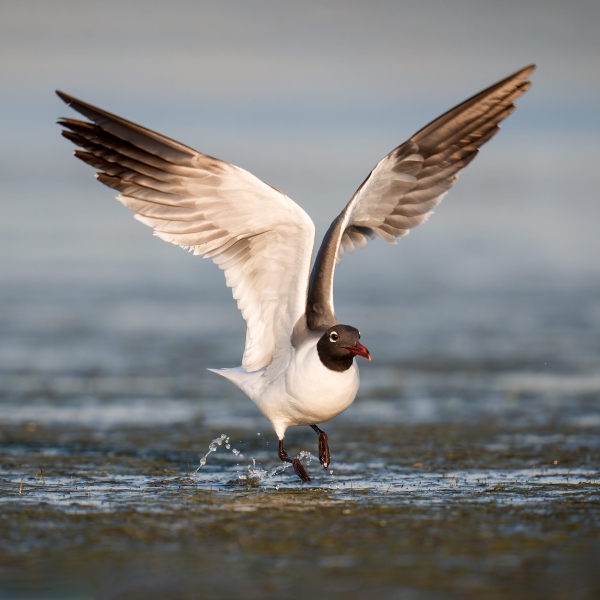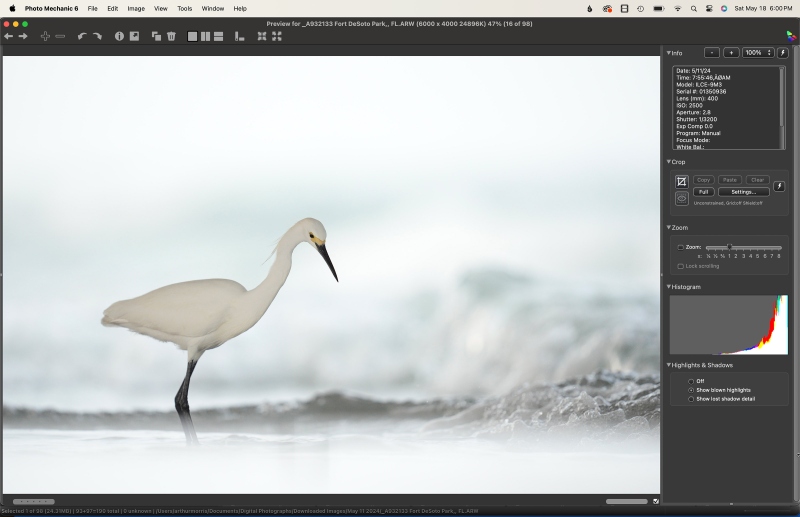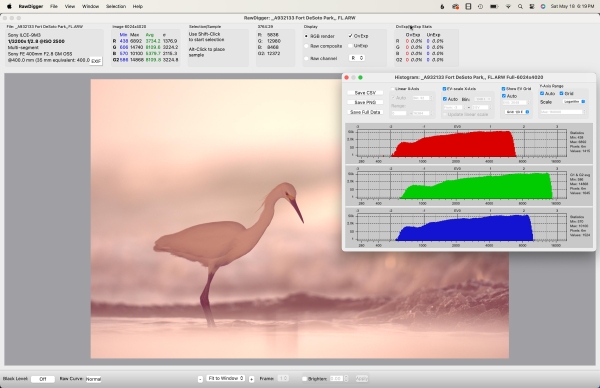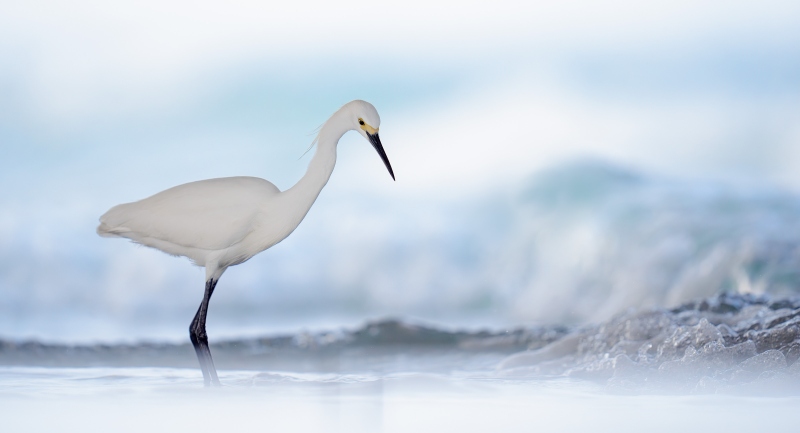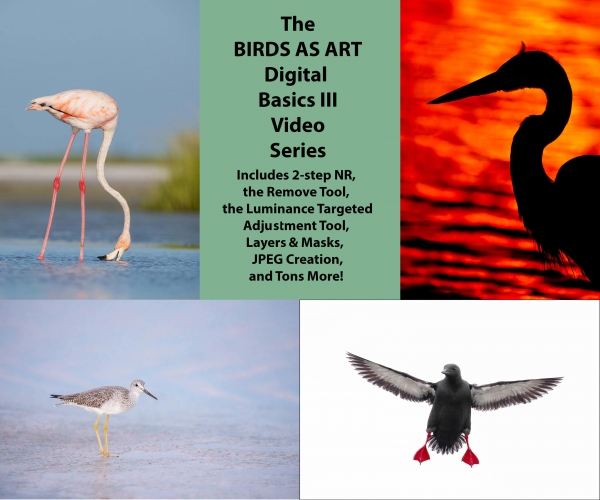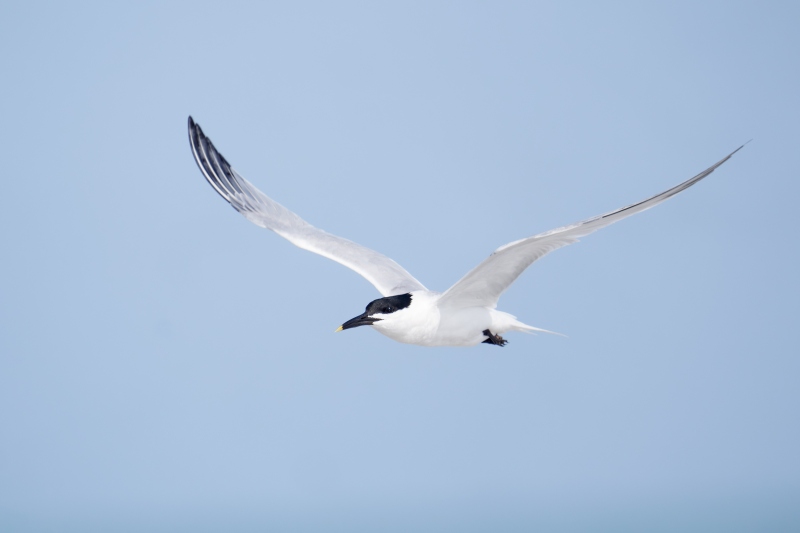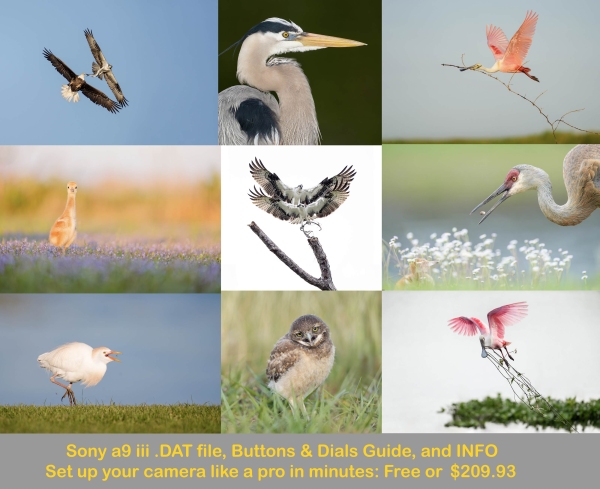Important Notice
After an update on 4 May, WordPress stopped sending post notifications. We are aware of the issue and are working on rectifying it. You can always visit the blog by visiting or bookmarking www.BIRDSASART-Blog.com.
Supporting My Efforts Here
If you enjoy and learn from the blog, please consider using one of my affiliate links when purchasing new gear. It will never cost you a single penny. To support my effort here, please order from B&H by beginning your search here. Or, click here, to order from Bedfords and enter the discount code BIRDSASART at checkout to receive 3% cash back to your credit card and enjoy free Second-Day Air Fed-Ex shipping. It is always best to write for advice via e-mail.
In many cases, I can help you save some serious dollars. And/or prevent you from purchasing the wrong gear.
Live Life to the Fullest
Join an Instructional Photo-Tour. Better yet, sign up for both Homer trips.
What’s Up?
My flights home from Arkansas were delightfully short (as compared to the trip to Little Rock!) I have a ton of sports on TIVO to get through; no spoilers please. I headed down to the lake on Monday morning and was glad to see that the three tiny Killdeer chicks that Clemens and I saw the day they hatched in early all fledged successfully; they should be flying in a few days at most. I was glad also to see one handsome crane colt from this year, possibly, the only survivor of the eight eggs that hatched this year. There might be another as there were two single colts not long ago. With a brisk wind from the west and clear skies, I did not do much photography.
Today is Tuesday 21 May 2024. I will head down to the lake and need for a bit. I need get back to work on 2023 taxes. I hope that you have fun too!
If you plan on purchasing a Sony a9 III Mirrorless Camera (or anything else for that matter), please remember to use or write for either my Bedfords discount code or my B&H affiliate link. Folks who use one of my two affiliate links to purchase the a9 III will receive my .DAT settings (the complete camera set-up) along with a Buttons and Dials Guide.
Please remember to use the B&H links that are found on most blog pages and to use the BIRDSASART discount code at checkout when purchasing your new gear from Bedfords to get 3% back on your credit card and enjoy free second-day air FedEx. Please, also, consider joining a BAA IPT. You will be amazed at how much you will learn!
If an item — a Delkin flash card, or a tripod head — for example, that is available from B&H and/or Bedfords, is also available in the BAA Online Store, it would be great, and greatly appreciated, if you would opt to purchase from us. We will match any price. Please remember also to use my B&H affiliate links or to earn 3% cash back at Bedfords by using the BIRDSASART discount code at checkout for your major gear purchases. Doing either often earns you free guides and/or discounts. And always earns my great appreciation.
Save 15%!
If you’d like to try out a new lens or if you need a lens for a specific trip or project (or for an IPT), LensRentals.com is the only way to go. To save 15%, simply click on the logo link above, arrange for your rental, and type in BIRDSASART15. If you type the gear you are looking for in the search box, it will pop right up. LensRentals.com offers affordable insurance. You can decline it, opt for LensCap: Damage Only, or select LensCap: Damage & Theft. Then hit PROCEED TO CHECKOUT. After you enter all of your info but before completing your order, be sure to scroll down to Promo Code box and enter the BIRDSASART15 code to save 15%.
I checked on renting a Sony FE 70-200mm f/2.8 GM OSS II lens for a week. The cost is only $122.00. LensCap: Damage Only coverage can be added for a very low $18.00. Going with LensCap: Damage & Theft would be $27.00. The shipping charge varies. They offer an interesting program called Lensrentals HD. By signing up for this shipping discount program ($99.00/year), you’ll get free Standard Shipping on all the orders you place.
Renting a Sony 600mm f/4 GM OSS lens for a week will cost you $536.00. The two coverage options come in at $76.00 or $114.00. Less your 15% discount when you enter the BIRDSASART15 code into the Promo Code box at checkout and enter the BIRDSASART15 code in the Promo Code box at checkout to save 15%.
Remember, to save the 15% on your rental you must start your search by clicking on the logo above, or on this link: LensRentals.com


B&H
To ensure that I get credit for your B&H purchases, you can always click here. The tracking is invisible but greatly appreciated. And, you can use your PayBoo card. You must use the website to order. B&H will reopen on Fri April 14. Thanking me for the past 4000 educational blog posts could not be any easier and will not cost you one penny. Please shoot me your B&H receipt for major purchases.
Many folks have written recently stating that they purchased a Sony a1 from B&H and would like their free membership in the Sony 1 Info and Updates Group, a $150.00 value. When I check my affiliate account, their orders have not been there. When I let them know that they get credit for B&H purchases only if they use one of the many B&H affiliate links on the blog or begin their searches with this link, they are always disappointed. If in doubt, please contact me via e-mail and request a BH link. I am always glad to help and to guide you to the right gear.
Bedfords Simplified
Click here to start your search. Choose standard shipping, and when you get to the payment page, enter BIRDSASART in the discount code box and hit apply. You will be upgraded to free second day air Fed-Ex and receive 3% cash back on your credit card once your stuff ships. Either is greatly appreciated by yours truly.
Bedfords Amazing BAA Discount Policy
Folks who have fallen in love with Bedfords can now use the BIRDSASART coupon code at checkout to enjoy a post-purchase, 3% off-statement credit (excluding taxes and shipping charges) on orders paid with a credit card. The 3% credit will be refunded to the card you used for your purchase. Be sure, also, to check the box for free shipping to enjoy free Second Day Air Fed-Ex. This offer does not apply to purchases of Classes, Gift Cards, prior purchases.
Visit the Bedfords website here, shoot Steve Elkins an e-mail, or text him on his cell phone at (479) 381-2592.
Gear Questions and Advice
Too many folks attending BAA IPTs and dozens of photographers whom I see in the field and on BPN, are — out of ignorance — using the wrong gear, especially when it comes to tripods and more especially, tripod heads. And the same is true in spades when ordering new camera bodies or lenses. My advice will often stave you some serious money and may help you avoid making a seriously bad choice. Please know that I am always glad to answer your gear questions via e-mail. If you are desperate, you can try me on my cell at 863-221-2372. Please leave a message and shoot me a text if I do not pick up.
|
|
|
This image was created on 7 May 2024 at Fort DeSoto Park. Crouching a bit, I used the handheld Sony FE 400mm f/2.8 GM OSS lens with the Sony FE 2.0x Teleconverter, and the ridiculously amazing Sony a9 III Mirrorless Camera. The exposure was determined via Zebra technology with ISO on the thumb dial. ISO 1250: 1/3200 sec. at f/5.6 (wide open). 7:06:22pm on a sunny afternoon. Zone AF-C with Bird Face/Eye detection enabled performed perfectly even with the 2X TC. Be sure to click on the image to enjoy a high-res version. Laughing Gull — breeding plumage adult taking flight |
Better Than a Poke in the Eye With a Sharp Stick …
When all three participants on the recently concluded DeSoto IPT showed up early at the AirBnB in Gulfport on May 7, I asked, “Is anyone up for a free photo session this afternoon?” They all were and I was too. The extremely low tide at my go-to afternoon location and almost no birds made things challenging at best. There were a few Black-bellied Plovers about along with a smattering of shorebirds including. But the muck made getting into photographic range nearly impossible.
For the first hour I checked on Jim and Geri and helped Steve Shore get set up with the Sony 600mm f/4 that he rented from me and his new a9 iii. Only then, when a handsome Laughing Gull landed in front of us, did I head back to the my SUV and set up the 400mm f/2.8 with the 2X and my a9 iii to handhold. I got lucky with the take-off shot.
On the way home, we stopped under the big bridge and made hay with a handsome young Great Blue Heron (as detailed in the Right Place. Right Time. No Light. Right Lens, Again! blog post here).
Another Square Crop Saves the Day
As I had not panned quickly enough when the bird took off to the north, the gull was position too far forward in the frame. My best option in many of these cases is a square crop; it turned out to be perfect for this image.
Typos
With all blog posts, feel free to e-mail or to leave a comment regarding any typos or errors.


